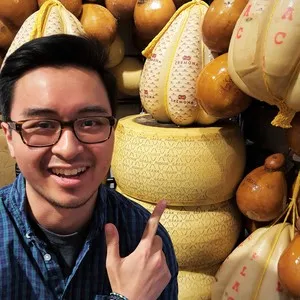What is Molecular Gastronomy?
Molecular gastronomy is the science behind cooking. Chefs are curious to understand the chemical processes and physical changes that occur when food is cooked. Cooking is more than just following a set of recipes. It’s about understanding the concepts behind it in order to come up with new dishes and creations.
Most chefs want to amaze their customers and leave them with an unforgettable dining experience. Molecular gastronomy helps chefs to achieve their goals by allowing them to express and unleash their creativity on any plate.
When I go out to a restaurant I don’t just want something to eat because I’m hungry. I want to go out and have a good time, with some good company and have a memorable experience. A passionate chef strives to do this for every one of their customers. Chefs want to impress you with their food. They don’t want to just give you a plate of food and call it a night, they want to serve you passion on a plate. What a chef is ultimately trying to convey to their customers is that eating is more than just a means of sustenance—but a way of sharing a wonderful experience.
Some Common Examples
Emulsions
Mayonnaise and salad dressing. What do they have in common? They’re both examples of emulsion. This includes things from salad vinaigrettes to aiolis as well as common sauces like a hollandaise over Eggs Benedict. An emulsion usually consists of a combination of a fat, such as butter or an oil, and another ingredient like an egg or vinegar.
Liquid Nitrogen
You’ve probably heard about using liquid nitrogen to make ice cream. The reason it’s so good is because liquid nitrogen is able to freeze the cream base so rapidly that it creates small ice crystals. This results in an unbelievably creamy ice cream. The average temperature of liquid nitrogen is below -300 °F, so you definitely don’t want any hiccups in the kitchen when dealing with this stuff.
Sous Vide
Sous vide means “under vacuum” in French. Ingredients are often vacuum sealed in order to impart flavor into the main ingredient. Marinating proteins becomes a thing of the past because this cuts down the amount of time needed for spices to penetrate meats.
Immersion Circulator
This is used in conjunction with sous vide. This method of cooking is all about precision: the temperature of the water bath is controlled to tenths of a degree Celsius and it allows for a perfectly even cooking temperature. No longer will you have to worry about whether or not your steak is going to be perfectly medium-rare because this is science and there’s no guessing games here.
Siphon
The siphon is used to make foams and basically aerates anything you put into it. Forget about using a whisk to make the perfect chocolate mousse because a siphon will make it for you in seconds. Instant whip cream anyone?
Tapioca Maltodextrin
Tapioca maltodextrin may look like powdered sugar, but what you’re getting is the freedom to impart the flavor of any type of fat into a solid. My personal favorite examples include the incorporation of bacon fat as well as olive oil. Just another way of getting bacon into every dish possible.
Transglutaminase (aka Meat Glue)
Have you ever wondered how they made those chicken nuggets you love so much? Well, the secret ingredient is transglutaminase or known by its street name as “meat glue.” This enzyme binds any two proteins together. Surf and turf anyone? Or maybe a lobster and steak combo?
Spherification
Spherification allows for chefs to create the perfect orbs of whatever juice you want. Combining any fruit’s juice with some sodium alginate and then dropping droplets into either a calcium chloride or calcium carbonate solution results in what looks like caviar. Caviar has never tasted so good; you’re going to have little orbs popping with the flavor of your favorite fruit. Sorry for the science explanation, I’m gonna need someone to explain to me how this actually works too. I’m looking at you chemistry majors.
On the Cutting Edge Today
Just wanted to end with a list of chefs I personally look up to. These guys are making all of our food dreams a reality: Ferran Adrià (elBulli – Roses, Spain), Heston Blumenthal (The Fat Duck – Berkshire, England), José Andrés (minibar – Washington, D.C.), Grant Achatz (Alinea – Chicago, IL), Homaro Cantu (Moto – Chicago, IL) and Wylie Dufresne (WD-50 – New York City, NY). Definitely check some of them out. You’ll be amazed just by looking at some of creations they’ve been able to think up.
Shout out to Spoon University Northwestern. If you’re still interested, check out this interview with Homaro Cantu by George Markoulakis at http://nu.spoonuniversity.com/restaurant/behold-future/


